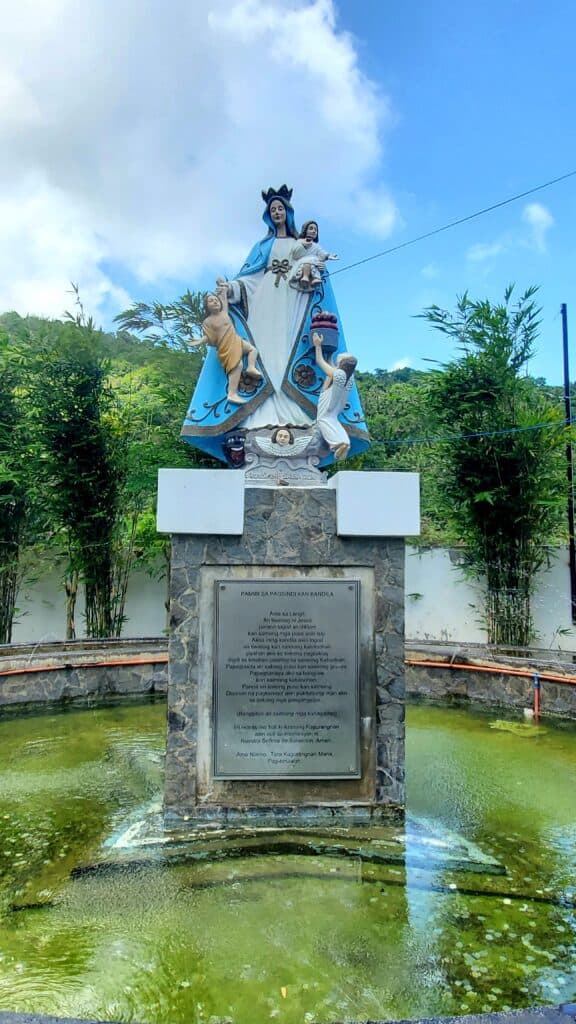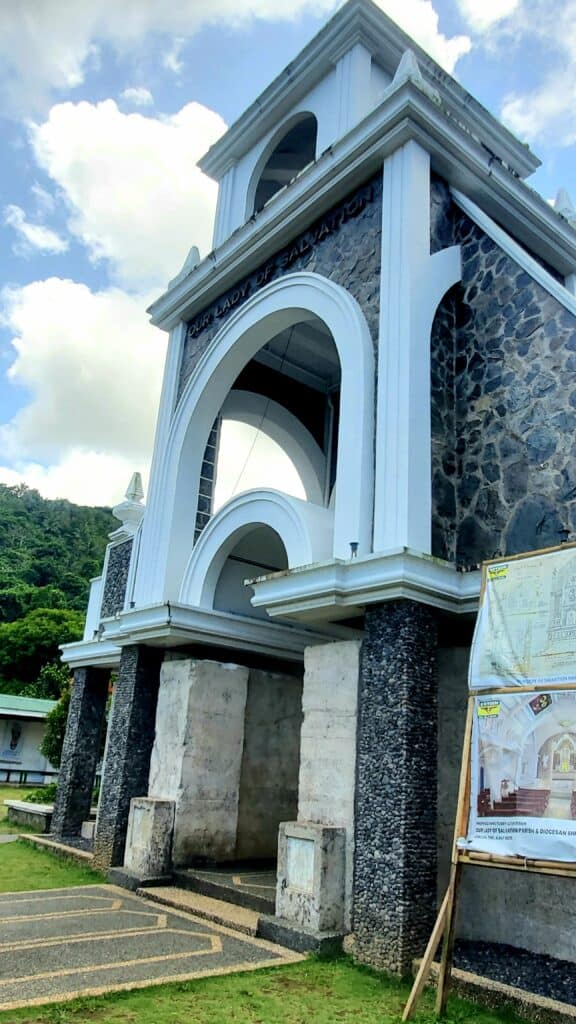“As the Mother of Salvation, she is the mother of Jesus, our Salvation, our Savior. So, Inâ brings us closer to the fount of all blessings and grace, Jesus Christ,”—Fr. Joseph Salando.
Nuestra Señora de Salvacion, often called by the devotees “Ina nin Kaligtasan,” “Mahal na Inâ,” or simply “Ina”– a sacred mother patroness in Albay. Ina holds a special place in the hearts of the Bicolanos, as She embodies a mother who people lean on in times of challenge.
Every 2nd of July, during the feast day of Our Lady of Salvation, a maritime procession has been one of the traditions of the devotees to express their Marian devotion. The statues and images of Ina are taken out to sea for the fluvial procession, where a patron saint is feted with boats sailing on the banks of a river or a shoreline.
Boats are filled with colorful banners and devotees are tightly holding their rosaries to pray and sing the hymns of praise. This activity serves to strengthen their reliance on Ina’s protection and guidance, especially on the part of the fishermen.
Recollecting some of the miracles of Ina, Father Erwhin Peraja, one of the priests of Joroan Church, shared how fishermen in the town firmly believe in the miracle attributed to Ina, which occurs after participating in the maritime procession dedicated to her.
“One of the miracles attributed to the Blessed Virgin Mary [is] kapag nagma-maritime procession daw; this is the account from fishermen na nagiging masagana daw iyong huli, after the maritime procession,” he said.
Deejai Tanji, one of the devotees who vows to serve Ina using her artistic skills, shared how Ina blessed their lives when her husband was fighting against cancer.
“Definitely, ‘yong partner ko, it was a miracle ‘yong paggaling niya from cancer kasi stage 3 siya eh, so diba may mga devotees na nagpapanata saiya tapos in return, she will grant your wish, tapos ‘yon pinanata ko ‘yon na I am going to help sa pag-spread ng name niya through my talent, through my gifts,” she said.
Roots of Devotion
Originating from Palermo, Italy, the image of Our Lady of Salvation was formed from the face of Mary, the Most Holy Mother of Light (Maria Madre Santissima Del Lume), believing that Virgin Mary wished to call her that name.
From Palermo, Nuestra Señora de Salvacion was introduced by Jesuit priests to the Philippines in places such as Cainta, Rizal, and Bohol. But it was in the province of Albay where Ina found her home when the Franciscans introduced Marian devotion during their mission in Bicol.
The Diocesan Shrine of Our Lady of Salvation is a Roman Catholic church located in Barangay Joroan, Tiwi, Albay. It is a popular pilgrimage destination at present that homesteads the religious image of Ina, which has been venerated by Bicolano devotees since 1776, when it was carved out of a local kalpi tree.
The shrine of Our Lady of Salvation began as a chapel on the hill called Pananaon, overlooking the sea and situated between the Bariis and Joroan Rivers. The image was then transferred to a chapel built in the Joroan River valley sometime in the 1860s, when Joroan was already a barrio.
Joroan is a coastal place that was once prone to typhoons, landslides, and pirate attacks during Spanish rule. The devotion to Our Lady of the Light then transitioned to Our Lady of Salvation. This shift occurred as She became not only a spiritual intercessor but also a protector against various calamities.
Following the destruction of the chapel in 1895 by a typhoon, the revered image found refuge in the Church of St. Lawrence the Martyr in Tigbi, now Tiwi. Later, Joroan was established as a parish in 1919, leading to the construction of a parish church to house the returned icon of Our Lady of Salvation.
Spiritual Destination
Considering Joroan’s status as a pilgrim town, Father Joseph Salando, the rector and pastor of the Nuestra Señora de Salvation Shrine, shared his personal experience with the devotees, despite Joroan Church being located in a remote area. Curious tourists and even non-Catholics find the church a place for a spiritual destination, attracting people far beyond the country to seek a connection to Ina.
“In our time today, personal testimonies of her devotees abound, saying they have experienced the love of God and have believed in some favors as miraculous because of the intercession of Ina,” he said.
In 2019, the church complex of Our Lady of Salvation was declared by the National Museum as “important cultural property.” Fr. Salandon said he wants to document stories of the miracles of Ina to further strengthen faith and spread devotion. Also, he wants to comply with the documentation requirement for the application at the National Shrine, of which the Catholic Bishops’ Conference of the Philippines (CBCP) is the granting body.
The national shrine status is an important recognition that the devotion has reached various parts of the Philippines or even beyond its borders, highlighting its significance to Filipino Catholics.
As preparations are ongoing for the upcoming feast of Nuestra Señora de Salvation on May 1, Father Salandon encourages Albayanos to support and participate during the celebration, as it reflects the faith and strong beliefs of Albayanos toward their mother, Ina. This celebration will be the first-ever grand maritime procession set jointly to the Magayon Festival.
Despite the challenges brought by modernity, Ina remains strong, especially for those who really believe in her presence and recognize her as a significant figure in the manifestation of faith. Certainly, this devotion will continue to inspire and uplift the souls of believers for the coming years. | Lyzha Mae Agnote, Alliah Jane Babila


